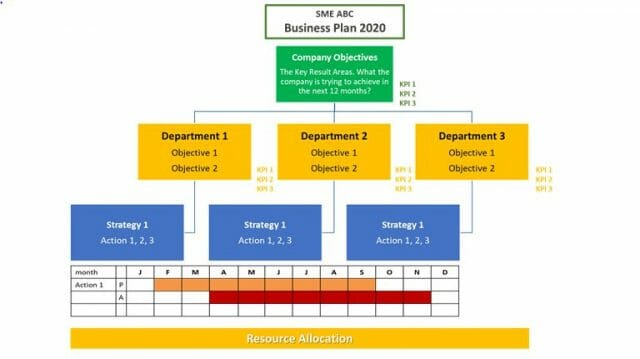By Keng Teck Yap, Founder and Managing Consultant of Bizsphere Brand and Marketing
Group
As we are at the start of year 2020, do we have a solid business plan to guide us? To get started, I recommend SMEs to develop a simple plan which can guide the company’s action for the next 12 months.
SET THE COMPANY OBJECTIVES RIGHT
It is SMEs’ 12 months goals. It’s results are what we wish to achieve end of the year. It is what we are going to focus and allocate our resources for. It can be increase in revenue, business diversification, being branded and known regionally, automate our production process etc. The best practice is to include measurable Key Performance Indicator (KPI) associated with it. For example revenue growth of 30 percent or increase automation
process from 50 to 70 percent.
Objectives are usually set based on historical data, market insights, team discussion or top
management’s vision. Wrong objectives lead to wrong actions and finally lead to undesired results. It is advisable for top management to set goals and discuss it with department heads to get buy-in. A lot of business plans fail in the process of implementation
due to uncommitted middle management.
GET THE DEPARTMENTAL OBJECTIVES ALIGNED
Clear Company Objectives offer clear direction. Yet, every operational department has its own readiness, capabilities and interpretation of how they can contribute to the company’s objectives.
SME business owners often assume that their middle management is capable of interpreting and taking necessary measures to contribute to the objectives. There is no mechanism in place to review their efforts and performance towards corporate objectives.
It is highly recommended for each department to develop their own “Departmental Objectives” which is aligned with the company’s objectives.
Once all departments have their own objectives as well as KPIs in place, the top management will be able to see whether the aggregation of these objectives and KPIs are able to meet the company’s objectives. It is also a good opportunity to review whether every department is supporting each other effectively. We call this vertical and horizontal alignment.
DETAIL DOWN THE STRATEGY & ACTION PLANS
SMEs are currently operating in a very dynamic economy. Respective departments need to detail down their strategies followed by action plans. This means putting ideas on documents so that they are well defined and understood by all team members. In the case of SMEs, business owners and department heads have many great ideas every now and then. The team members who are supporting the effort often get confused on varying ideas every time to time. A documented strategy and action plan with a target completion date offers highest clarity.
It also acts as a self-discipline mechanism reminding us how far we are before reaching the destination. It allows early detection of any “detour or breakdown” and get it dealt with before it’s too late. I often advise my customers to use it as an appraisal tool as it clearly
shows any gap in performance.
ALLOCATE MATCHING RESOURCES
This is the part where most SMEs leave out. Target is set but resources are not allocated. A department which has set action plans but unsure of how much resources to allocate will only be left with the sense of “hoping to achieve” instead of “driving to achieve”.
At the end of the day everyone will be giving excuses on non-performance. There is always the question of “How much to allocate?”. SMEs need to be practical as it will greatly affect a
company’s cash flow and profitability. Departments should be given a chance to request then deliberate with management team to find a balance. This will be a reality check to the management on whether their objectives and KPIs are too high considering the present resources they have.
Business Plan Development is not tough, neither it is straight forward. We have to acknowledge that some managers are efficient and is a performer in their tasks but may not be a good strategic planner. A business plan can only be strong if it is developed in a concerted effort. We cannot rely on SME business owners to do it solely by themselves. We had facilitated business plan development for SMEs where we had to take both “top down and bottom up approaches”. We challenged both top management’s high targets and middle management’s low targets and short of strategies.
SMEs must make a balance between objectives, strategies, action plan, timeline and resources to develop a strong business plan. Don’t give excuses not to develop one fearing it might not be a good one. It takes practice and trial and error. We learn from it. Challenge yourself to have a strong business plan for year 2020.










